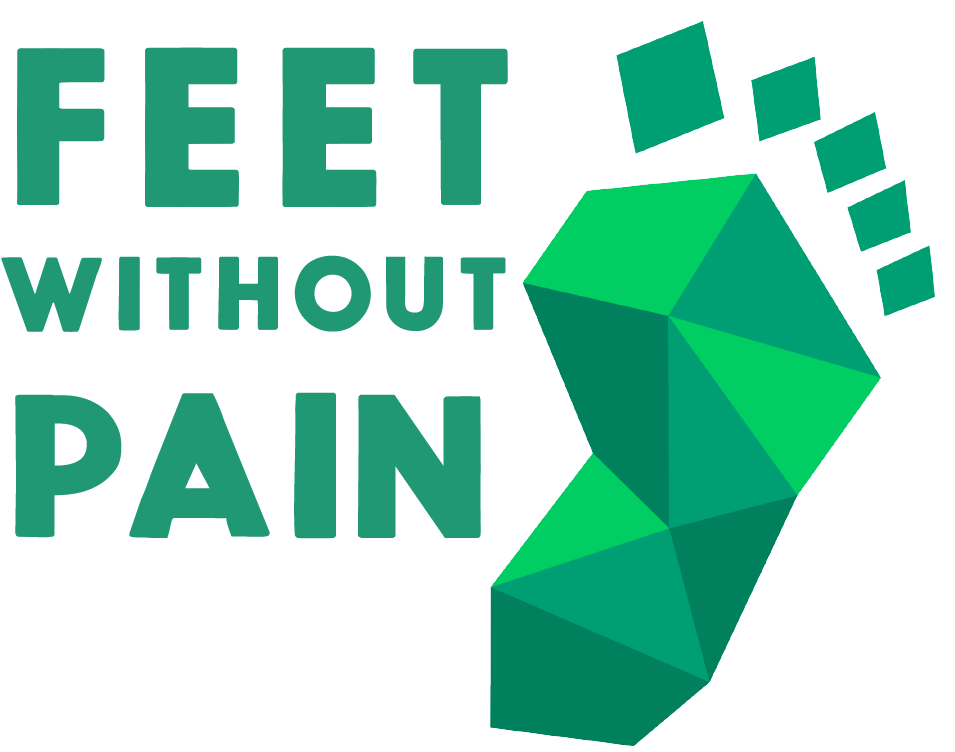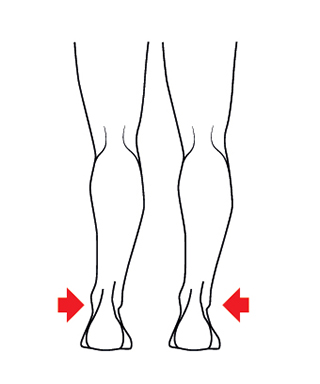Ankles
The ankle is a complex joint that connects the legs to the feet. It is made up of three bones: the tibia, fibula, and talus. The tibia is the shin bone, the fibula lies on the outside of the leg, and the talus fits between them, just above the heel bone (the calcaneus).
The ankle’s function is to receive and distribute the body load to the feet. This joint also has several ligaments and tendons that help keep it stable because it takes the body’s weight. However, even with all these structures, the ankle remains vulnerable to sprains and fractures due to the high load it supports daily.
In a survey by Feet Without Pain, “Health and quality of life: the relationship with the feet, ankles, and knees”, it was observed that 59% of men experience ankle pain compared to 61% of women.
Ankle Pain
Ankle pain can occur due to sprains, fractures, traumas, and pathologies such as arthrosis. In addition, overload and footstep misalignment are the main factors that stimulate pain in the area.
Typically, ankle discomfort appears under the malleoli or in the bones very close to it, known as protruding ankle bones. The primary sensations of discomfort are: twinges and burning, even more, felt when standing or performing some physical activity. These pains may not mean anything serious, but when accompanied by other symptoms, such as swelling and even inability to walk or bear weight, you must look for a specialist to assess the situation.
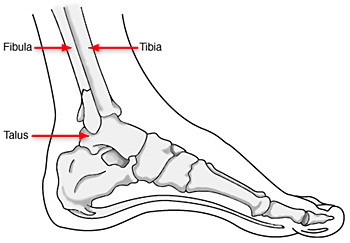
CAUSES
Ankle misalignment and pain
The leading cause of ankle pain is misalignment, which can be varus or valgus. Valgus misalignment is when the ankle goes inward, and varus misalignment is when the ankle goes outward. When these changes happen, one side suffers from the impact of bones and the other from the tendons and ligaments stretching, causing pain.
In valgus malalignment of the ankle, the joint deviates inwards, stretching internal structures and compressing the ankle’s lateral. This positioning is related to pronated footsteps and flat feet because, in these cases, the weight during walking is more concentrated on the inner region of the foot.
In varus malalignment of the ankle, the joint deviates outwards, leading to compression of internal structures and stretching of ligaments and tendons on the lateral side of the ankle. This type of ankle deviation is related to supinated footsteps because the body weight is distributed on the sides of the feet and with pes cavus. After all, this type of foot has a smaller contact area with the ground and a lower capacity to absorb impact.
Overload
Overload is one of the factors that can cause several problems, such as tendinitis and osteoarthritis. Therefore, it is essential to maintain the ideal weight, as the extra kilos can significantly increase the pressure on the ankles and cause pain.
In addition, we must take care with the intensity and repetition of physical exercises. Athletes are more likely to experience overload pain because they push themselves hard and perform heavy training.
Therefore, it is necessary to know that suddenly modifying the training can cause ankle and foot pain.
Instability
Another pain factor is ankle instability. When the person repeatedly sprains, the ankle can become more vulnerable due to the loss of function of the ligaments that become more flexible instead of stabilizing the joint. This generates a lack of confidence and balance for everyday activities, causing pain and an increased risk of falls.
Trauma
Injuries caused by external factors, mainly sprains or blows, can cause tissue stretching or rupture in the ankle. The bigger the injury, the harder it is to recover. And if the body fails to heal properly, the ankle can become unstable, exposing the region to further damage. When the instability is considerable, you can choose a surgical procedure to improve recovery.
Inadequate shoes
Shoes are critical factors for the feet’s health. They can be the villains responsible for causing foot, heel, and ankle pain. The problem happens when:
– They have a rigid sole that does not absorb impact;
– The shoe is too low on the heel and sides, not offering stability for the ankle
– They have high heels, as they reduce the balance and increase the ankles’ vulnerability;
– The heel counter, lining, and collar are rigid and squeeze the heel and Achilles tendon area, which can cause blisters,
– Inflammation, pain in the Achilles tendon and bursa.
In these cases, the best thing to do is always wear comfortable shoes and custom-made orthopedic insoles, which reduce the impact on the feet and protect the heel.
MAIN PATHOLOGIES THAT CAUSE ANKLE PAIN
Sprains
Occurs after a sudden lateral movement of the foot. According to the study “An epidemiological survey on ankle sprain”, an ankle sprain can happen during sporting events or everyday activities. All it takes is one clumsy step or a botched landing after a jump for the ankle to turn.
An ankle sprain is usually associated with injuries to the ligaments that support this structure. Ligaments are responsible for restricting the excessive movement of the joint. As a result, during the ankle’s sudden movement, they are excessively stretched, causing partial or complete tearing of that tissue.
This pathology usually occurs due to overload and causes inflammation in tendons – fibrous structures that join muscles to bones. In addition, it mainly affects athletes and people who practice physical activity because excessive training and sudden movement changes can lead to this condition. Trauma and injuries, such as blows to the ankle area, can also cause sprains.
The most affected tendon in the ankle region is the Achilles tendon. In addition to it, the tibial tendon can be affected, and the pain tends to appear in the internal area. The peroneal tendons, when inflamed, cause pain in the lateral region of the ankle, very close to the lateral malleolus.
Bone Fracture
Fractures are more common in older people and may be related to decreased bone mass, muscle mass loss, and other supporting tissues’ wear and tear.
However, ankle fractures are more common in young adults due to the practice of high-intensity physical activity. This type of injury is usually linked to sudden, high-impact movements that occur in everyday life or while practicing some exercises.
Because it is thinner, the fibula is the ankle bone that suffers most from fractures. In that case, it may need surgery to reestablish foot balance.
Arthrosis
Osteoarthritis is a particular type of arthritis that affects the joints and wears the cartilage. This disease stiffens and makes moving body joints, such as knees, ankles, and hips, difficult. In the case of the ankle, a much more stable structure than the knee and hip, arthrosis is not as expected, but it does happen.
In addition, arthrosis is a progressive disease (which develops over time). It mainly affects people over 65 and still does not have a definitive cure, but treatments for pain relief and symptom alleviation are extremely effective. Read more about Osteoarthritis.
PREVENTION AND TREATMENT
Misalignment and ankle joint are the leading causes of pain in the area. Therefore, the goal of treatment is to correct these problems. The first step is to maintain the ideal weight because the ankle receives all the load from the body, and being over the limit can overload this structure.
In addition, it is recommended to undergo an evaluation with a doctor so that he can prescribe medications that speed up recovery. It is also advisable to consult a physiotherapist so that he can thoroughly analyze the case and verify whether or not there is some misalignment. Some essential tips are passed on to anyone looking to relieve ankle pain. Are they:
Follow the “PRICE” method
The acronym in English means: protect the site, rest, ice, and compress the pain area, like wrapping the ankle with an elastic bandage. These steps are simple and very important for effective pain relief. Remember that putting on ice on the site can control the inflammation, but it should only be applied for up to 20 minutes.
Warming up before any physical activity
To prevent ankle injuries, performing warm-up exercises before exercising can help. Blood circulation in the region increases, improving joint lubrication and muscle response. This way, the ligaments, and tendons are less strained, preventing injuries.
Adequate weight
Keeping the ideal weight prevents the lower limb joints from overloading. In addition, having a healthy lifestyle, without exaggeration, benefits the entire body. If you’re having trouble losing weight, see a doctor, a nutritionist, and a physical educator.
Balance exercises
The ankle is a very mobile joint. It is responsible for maintaining the balance between the legs and feet. Balance training, such as the slack line, helps improve ankle stability. In addition, this exercise prevents the joint from deviating and becoming prone to sprains and other injuries.
Orthopedic insole
Continuous use of the custom-made insole is one of the main methods to prevent and improve ankle pain, as it corrects the step, redistributes pressure, and enhances impact cushioning.
Orthopedic Anklet
A device that helps protect the region and avoids major sprains is essential when the area has already been injured. The anklet assists in maintaining ankle alignment until its ligaments, tendons, and musculature recover. The type of anklet will depend on the reason for the pain and the person’s activity. Look for a specialized professional to help you choose the most suitable model.
Verify your shoes
It may seem simple, but this is an essential task: analyzing whether the shoe is worn out, with a larger part on the side or inside, can clearly indicate a misalignment. If it is not changed, it can worsen the misalignment of the footstep, leading to injuries.
Foot calluses
The callus may be an indication that the load distribution is not ideal. However, it is a natural skin response that intends to protect the exposed region from the excess load. Therefore, it is vital to look for a physiotherapist so that he can analyze your gait and identify what is causing this imbalance before a more severe injury affects the area.
Medicines
Anti-inflammatories and pain relievers prescribed by the doctor can help reduce pain. However, due to their side effects, never take medicine recommended by friends or without a doctor’s recommendation.
Surgery
Surgery may be necessary for some injuries with tissue rupture (bone, ligament, or tendon) to ensure ankle mobility and functionality. Several surgical techniques can be applied depending on the injured tissue.
Only with the exact evaluation of the trauma is it possible to know the best method to be adopted. In case of very intense pain, swelling, or bruising after a sudden movement or a fall, see a doctor.
FEET WITHOUT PAIN® CUSTOM SHOES AND INSOLES FOR ANKLE PAIN
Feet Without Pain insoles and shoes are designed to prevent the onset of pain in the lower body. In the case of the ankle, they act directly to provide stability, correcting changes in footfall deviation and improving impact cushioning.
The tailored insole has the proper support of the foot’s arch, which helps improve stability and cushioning of the load absorbed during walking. In addition, it prevents the ankle from overloading.
If there is gait misalignment, the baropodometer, a device that measures pressure in the feet, will be able to detect it, and the insole has corrections to treat it.
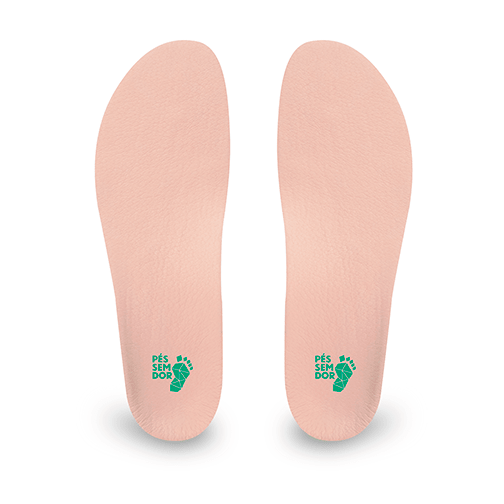
On the other hand, custom-made shoes respect all the measurements of the feet: width, length, and circumference. With this, the shoe offers comfort and excellent stability, mainly because it considers the width of the feet, which standard shoes do not.
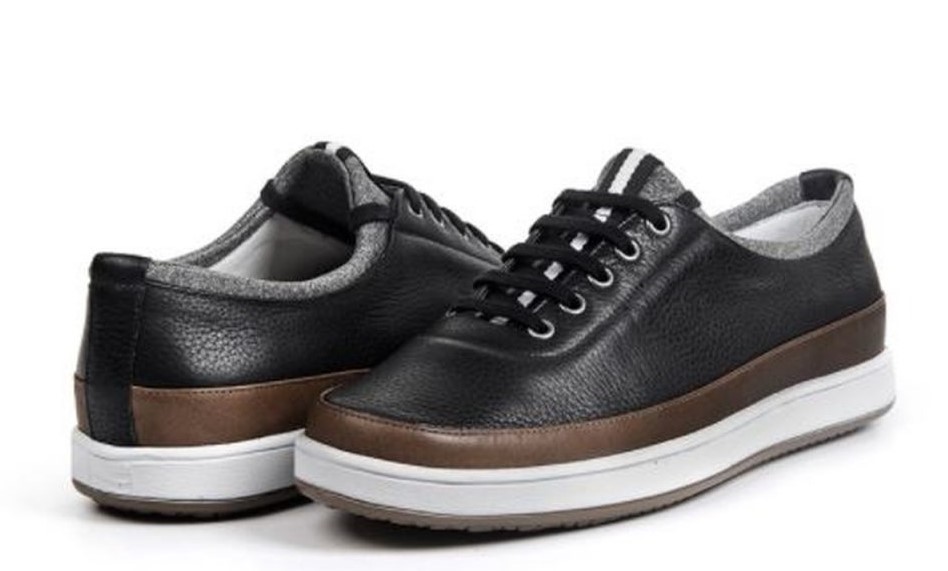
Custom Tommy Shoes. The bespoke shoe line has more than 20 models for you.
The custom insoles and shoes are made with 3D technology and millimetric digital precision after a free foot, ankle, and knee evaluation with our specialists at one of our branch offices. Check some of their benefits for your feet below:
- Elimination or reduction of pain;
- Injury prevention;
- Increased comfort;
- Perfect fit;
- Standing longer without pain or discomfort;
- Prevention of pathologies progression;
- Improved impact absorption;
- Improved sports performance.
SPORTS
Ankle injuries are common in sports that involve sudden changes in direction and jumping close to other athletes due to the risk of spraining or falling onto another player. In volleyball, for example, ankle sprains are very common. Therefore, landing and rolling movements are practiced a lot during training. Athletes who already have a history of sprains usually use some protection (anklet, bandage, insole)
TIPS AND CURIOSITIES
To relieve pain and make the treatment efficient, look for a specialist so that he can correctly diagnose the reason for the pain. Then, follow the treatment recommended by the professional. Many of the treatments will include:
Rest
Respecting the recovery time is fundamental, mainly because the ankle receives all the body’s weight when we are standing. For this, one can control the load of physical activity, reduce standing time or use crutches or a cane to avoid weight bearing on the injured ankle.
Put ice on the pain site
Putting ice on the injured area helps ease the pain and control the inflammatory process. Place the ice pack over the area for 15 to 20 minutes.
Orthoses
Using anklets and insoles can help a lot in recovering from the injury. The ankle brace will prevent joint movement and improve positioning, avoiding stress so tissues can heal properly. On the other hand, insoles help during and after the recovery process, maintaining the gait alignment.
Exercises
Keep your muscles strong so that they can prevent ankle sprains. Performing a good warm-up before physical activities helps to prepare the musculature and is essential to avoid injuries.
Balance: go barefoot and try to stand on one foot. Hold one foot for 15 seconds and then switch. If you already have good balance and standing on one foot is not a challenge, try moving your arms while doing this activity. Also, try balancing on a softer surface, such as an exercise mat.
Calf: stand on your toes for 10 seconds and slowly lower yourself until your heels touch the floor. Perform 3 sets of 12 reps. If it’s easy, perform the exercise 10 times with just one foot and then with the other.
FREQUENTLY ASKED QUESTIONS (FAQs)

How to purchase your custom shoe or insole?
It’s fast and easy! Schedule a free evaluation of your feet with our specialists to buy your custom-made shoe.
Call, send a message to WhatsApp at 4003-8883, or visit: www.pessemdor.com.br/agendamento.
How does the evaluation work?
Upon arriving at a Feet Without Pain branch office, you will be received by a foot, ankle, and knee specialist, who will then fill out a registration form and ask some questions about your pain. Next, the assessment of the feet begins.
The specialist will perform an examination of your feet to understand your foot pains and complaints. Then, using the high-precision 3D scanner device, the specialist captures your feet’ measurements.
We are the only company with a 3D scanner for designing custom shoes. First, with the measurements of your feet, a mold is created using 3D printers, and after that, we start making your shoe.
How long does it take for the shoes and insoles to be ready?
Feet Without Pain produces custom-made shoes in up to 3 days; then, they are sent to your home free of charge!
Is the evaluation free?
Our assessment is completely free! We perform a complete analysis of your feet and legs, and you pay nothing for it!
Do we accept medical insurance?
We do not work with insurance because our assessment is completely free! But you can check if your plan somehow refunds you regarding the shoes!
EXTERNAL LINKS
1) The prevention of ankle sprains in sports: a systematic review of the literature | NCBI;
2) Ankle Injuries Among United States High School Sports Athletes, 2005–2006 | NCBI;
